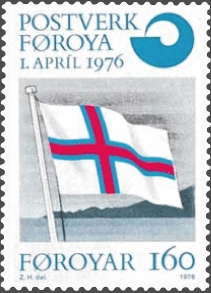Faroese
A descendant of Old Norse, Faroese has had to contend with Danish but remains the principal language spoken and written in the Faroe Islands.

Faroese is the main language of the Faroe Islands, which are located in the North Atlantic Ocean and are a self-governing community within the Kingdom of Denmark. Approximately 50,000 people live on the islands, which were probably first settled by Irish hermits and then later by Scandinavians from the British Isles and Norway. The islands have belonged to Denmark since the dissolution of the common Danish-Norwegian kingdom in 1814.
Faroese is a North Germanic language, which is most closely related to Icelandic and somewhat less closely to Danish, Norwegian, and Swedish. It is descended from the dialect of Old Norse spoken by the Norwegian immigrants to the islands. Although a handful of Old Norse texts seem to exhibit Faroese characteristics, there is an almost complete lack of evidence about the development of Faroese from both the Viking and medieval periods.
With the beginnings of the Reformation, Danish came to be used as the language of administration and the church on the islands, and Faroese essentially died out as a written language (the influence of Danish can still easily be seen in Faroese; there are numerous Danish loan words, Danish-influenced stress patterns, etc.). Faroese began to reemerge as a written language around 1770, with the recording of the first Faroese texts of any substance, three ballads recorded by J. C. Svabo. Svabo then designed a new orthography for Faroese, based largely on the pronunciation of his own dialect.
In the first half of the nineteenth century, it came to be believed that a language was an essential part of a people’s identity, and various scholars therefore began to take more of an interest in Faroese. The most important of these was probably V. U. Hammershaimb, who designed a new orthographic system for Faroese in 1846, one which reflected the Old Norse origins of Faroese much more clearly. Hammershaimb’s system was much better received than Svabo’s had been, and it is still used today. It was also a crucial step in the emergence of the view that Faroese is a language in its own right, rather than some odd dialect of Icelandic or Danish.
However, Danish remained the dominant language of the islands; for example, a law passed in 1912 mandated the use of Danish in teaching older pupils. In 1938 a new law allowing the use of Faroese in schools was passed. Faroese was also used in the church from about 1902 (a translation of the New Testament into Faroese appeared in 1937, and a translation of the complete Bible in 1961).
In 1948 Faroese became the main language of the islands, by virtue of the Home Rule Act passed that year, and since then the status of Faroese has been assured. However, Danish has retained its strong position; its status is equal to that of Faroese in public affairs, and this issue remains controversial today.
Further reading:
- T. Nauerby, No nation is an island. Language, culture, and national identity in the Faroe Islands (Aarhus: Aarhus University Press, 1996).